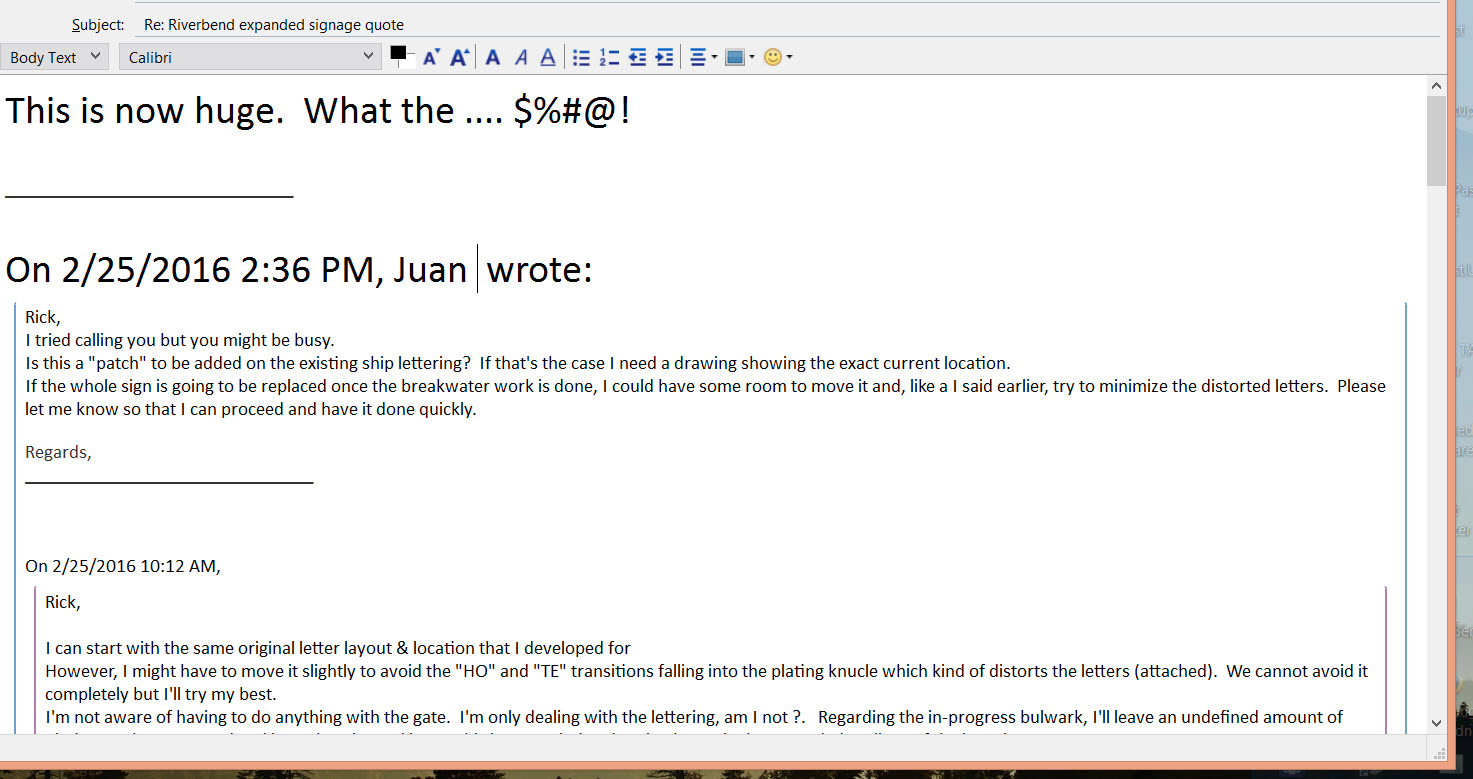
Font too small ONLY in sent folder
Hi, I have a font display size problem and I cannot find a solution. If I send a message to myself, the font size displays correctly in the inbox. However, that same message font is always displaying very small when I open it from the 'sent' folder or I preview it in the preview pane while in the sent folder. Now, if I open a sent message from the sent folder and I click reply or forward, the same font displays now in the proper original size. Attached is my configuration for displaying fonts. What can be causing this ?
Chosen solution
Each incoming message should declare the encoding that was used in its composition and any email client should respect that. All you are doing with these settings is choosing the font (and the size thereof) used with that encoding.
For your outgoing messages, Latin is probably a safer choice, since you presumably won't want cyrillic, arabic or any of the far eastern alphabets, and Latin will cover all the main variations used in western europe and anywhere that uses european-derived languages. I use Unicode/utf-8 myself, though there is a tiny and diminishing risk that some correspondents are using aged email clients and systems that don't use unicode.
However, for the characters used in latin character sets, unicode is deliberately designed to be interchangeable with older character encodings. My interest in it was sparked by the ability to compose accented and other characters via the keyboard, and unicode seemed the most general solution to be able to depict any character.
These could all be done using Latin: façade straße été buen día
…but what about these? хорошего дня καλή μέρα ขอให้เป็นวันที่ดี
Ler a resposta no contexto 👍 0All Replies (12)
When you are in the Sent folder and you have an email showing in the message pane. could you press View > Zoom > Reset and see if that makes a difference?
No, it doesn't. Besides, if I was zoomed out for some reason, resetting the zoom would adjust the whole message thread including all the different font sizes not only the ones that are smaller. My problem is that only the sections of the text that I wrote are smaller. If I reply to a message and I send it, then the body of that reply shows smaller when I open or preview the reply from the 'sent' folder. However once I reply or forward it, the text is back to normal in the compose window.
See attached.
OK I think I understand better now. Could you look at Preferences > Composition > General and check the size of the HTML font, please? (The settings information you included in your OP is from Preferences > Display, which is different.)
Calibri medium
Now something else happened ... I was testing the other sizes (large, xx-large, etc and I cannot revert to the 'medium'. I choose medium but now my composition text is stuck in XX-large, ggrrrrr :(
EDIT: Nevermind, its ok now. But the original problem remains.
user1324164 modificouno o
Sorry to keep posting. I think I know what's happening. The emails with small font are sent with UTF-8 whereas the incoming mails are Windows-1252 (that was before I set incoming and outgoing both tho Windows-1252). So if I click in one of the sent messages with small font and I manually choose view>character encoding>western the font changes to the normal size. However, I don't see a setting to make UTF-8 always bigger so that is simliar in size to Western-1252 .... any thoughts ?
Try "Other writing systems".
Zenos said
Try "Other writing systems".
Thanks, that did it. I changed the fonts and sizes to the same as in 'Latin'. However, why do I need two systems, 'Latin' and 'other systems' when I always write the same way ?
I don't know why they have left UTF-8 disguised as "other writing systems". I'm sure I've seen UTF and/or Unicode as explicit choices but they have gone again.
You may always write in the same way, but some will send to you using unicode, and in general your reply would be in the same encoding. ;-)
oh, wait so what you are saying is that my current system is 'other writing systems' aka UTF-8 but I have set up incoming and outgoing as windows-1252 ... should I put as UTF-8 instead .... why the double choice? the outgoing/incoming seems to be overiding the main chosen system (UTF-8). Confusing ... really.
my email is 95% of the times in english. I get the occasional email in spanish . What settinsg / characters would you reccommend so that I don't get weird characters ?
Chosen Solution
Each incoming message should declare the encoding that was used in its composition and any email client should respect that. All you are doing with these settings is choosing the font (and the size thereof) used with that encoding.
For your outgoing messages, Latin is probably a safer choice, since you presumably won't want cyrillic, arabic or any of the far eastern alphabets, and Latin will cover all the main variations used in western europe and anywhere that uses european-derived languages. I use Unicode/utf-8 myself, though there is a tiny and diminishing risk that some correspondents are using aged email clients and systems that don't use unicode.
However, for the characters used in latin character sets, unicode is deliberately designed to be interchangeable with older character encodings. My interest in it was sparked by the ability to compose accented and other characters via the keyboard, and unicode seemed the most general solution to be able to depict any character.
These could all be done using Latin: façade straße été buen día
…but what about these? хорошего дня καλή μέρα ขอให้เป็นวันที่ดี
Thank you




